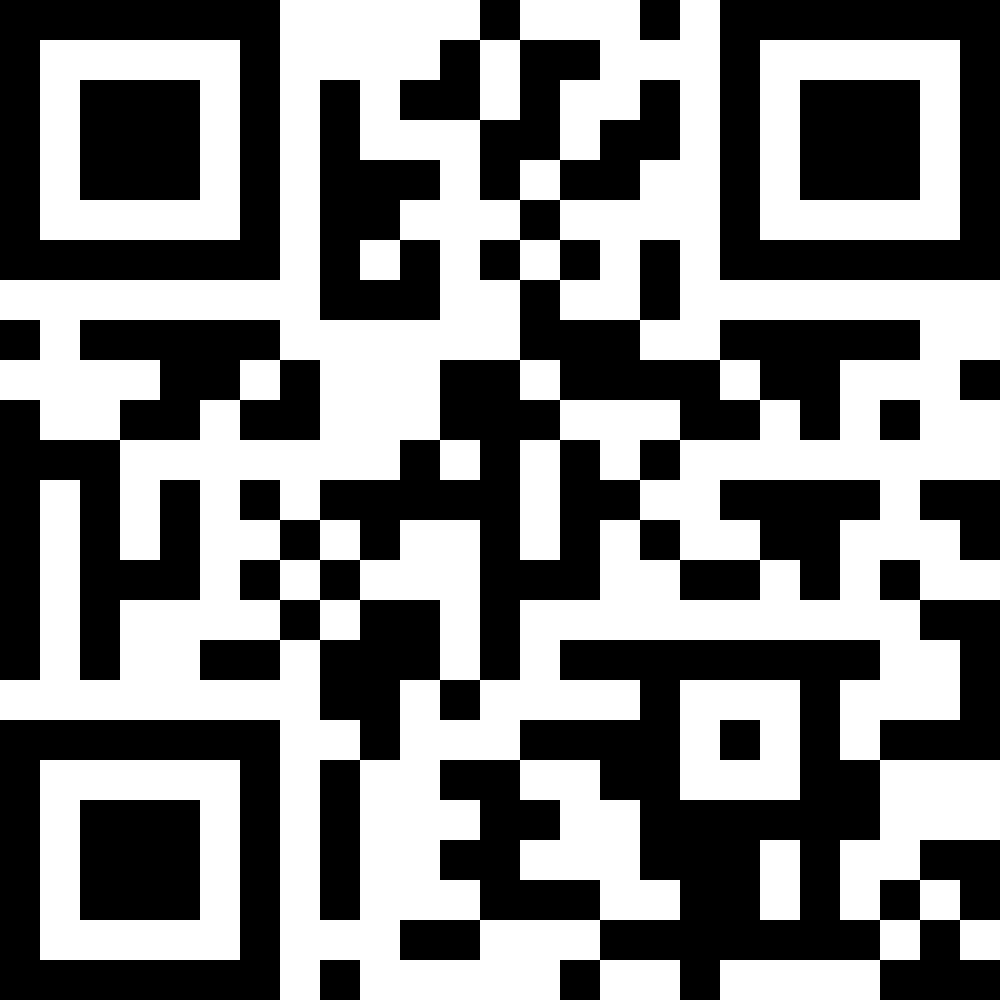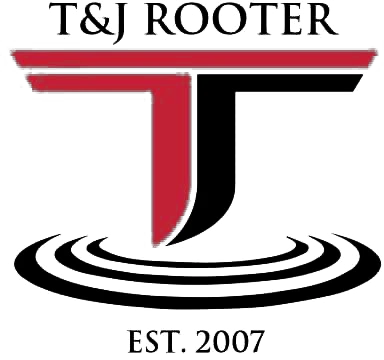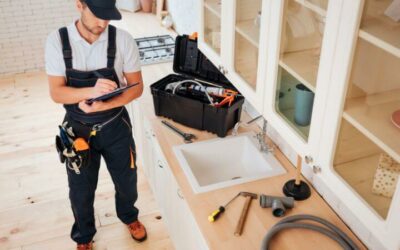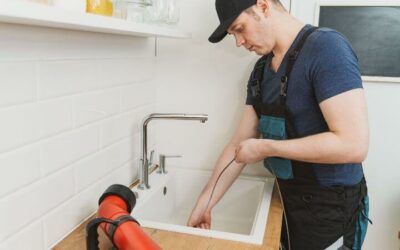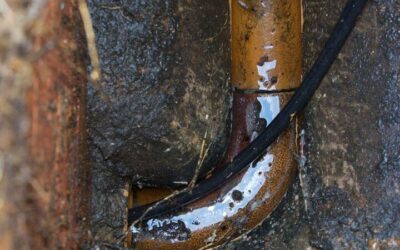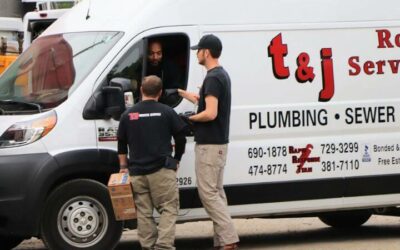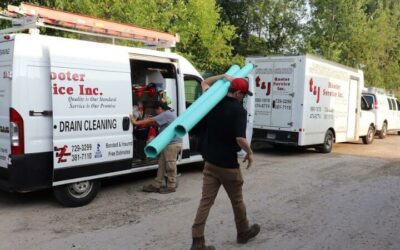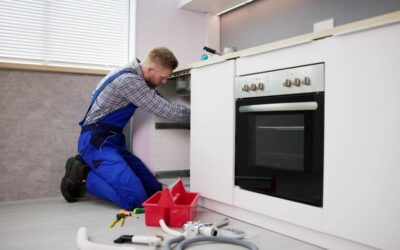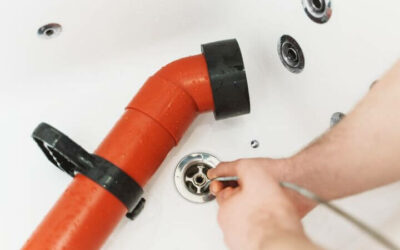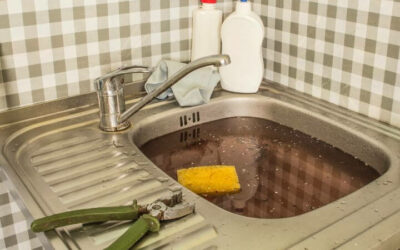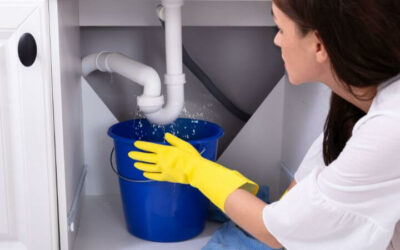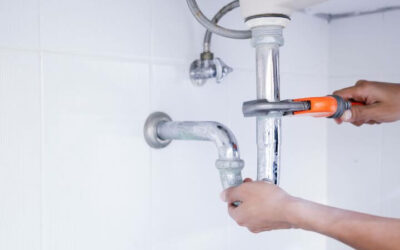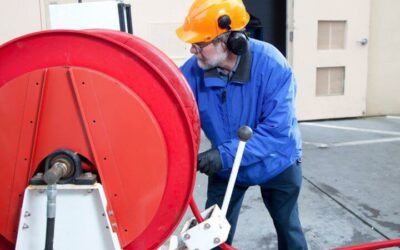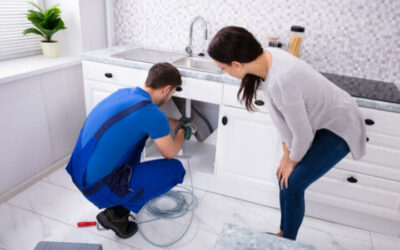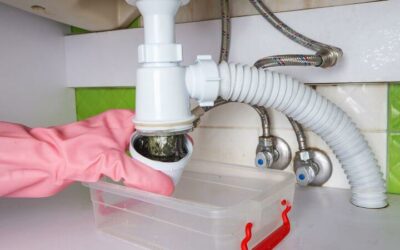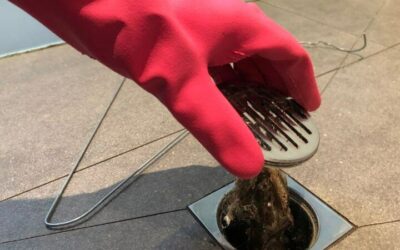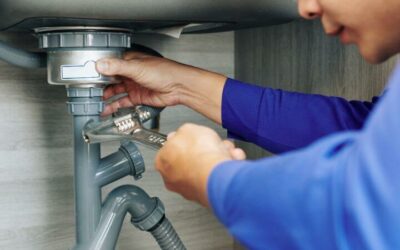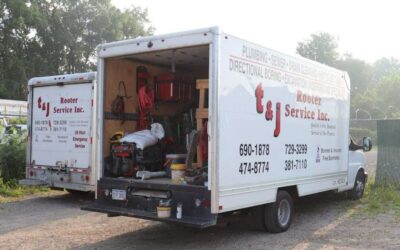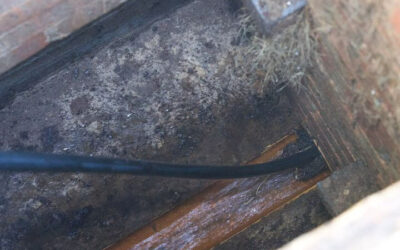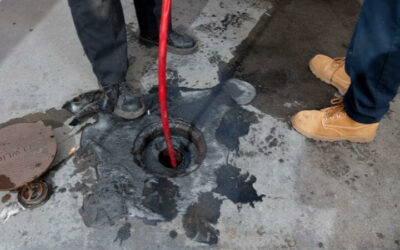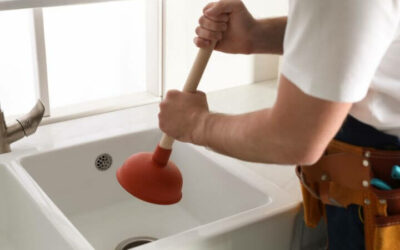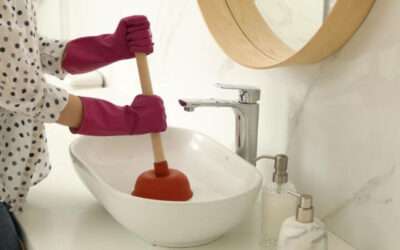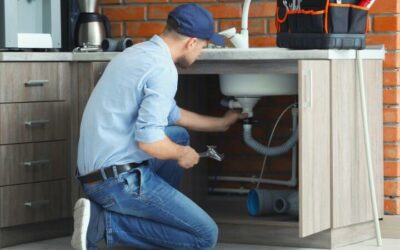In this informative article, we dive deep into the world of hydro jetting, an effective technique for cleaning clogged or slow sewage lines, a service excellently provided by firms such as T&J Rooter Service. We start by defining and exploring the importance of hydro jetting and its common applications. Then we shed some light on the toolkit of a professional hydro jetter from equipment to safety gear. We outline the step-by-step process of hydro jetting from assessing the drain condition, preparation, execution, cleaning up, to post-jetting maintenance. Furthermore, we underline the roles and responsibilities of a hydro jetting professional and give some tips on choosing a reliable service. Whether you are looking to engage with a hydro jetting professional or simply curious about the subject, this article offers a comprehensive guide. Hydro jetting, or high pressure jetting, is a technique used to clean and unclog pipes. This method uses a high-pressure water stream to remove build up and debris in sewer lines. Unlike manual rodding or snaking, which merely tear through obstruction, hydro jetting scrubs your sewer lines clean. This plumbing technique is commonly done to clean out drains and sewer lines to make sure they’re functioning properly.
Understanding Hydro Jetting
Hydro-jetting is a method used by professional plumbing contractors to clean clogged or slow sewage lines. A blast of water at high pressure is sent into the lines that will usually remove blockages and build up. Hydro-jetting systems normally use approximately 35,000 psi, which works very effectively.
In understanding hydro jetting, it’s imperative to know that its procedure involves the insertion of a high-pressure water-jetting nozzle into a cleanout or other accessible opening. The nozzle is connected to a high-pressure water pump via a flexible hose, and the water is forced down the pipeline where it cuts and disintegrates the blocking material into small particles that can be easily flushed out.
Definition of Hydro Jetting
In basic terms, Hydro Jetting is a method of cleaning with high pressure streams of water to remove build up and debris in tanks and lines. Hydro jetting has become a standard for many plumbers to resolve issues with clogged pipes.
The Importance of Hydro Jetting
Hydro jetting serves the purpose of not only unclogging pipes but also preventing future clogs. It’s a superior method to traditional drain-clearing efforts because it goes well beyond punching a hole in the clog to actually removing the lining that often clings to the pipe wall, which is typically the source of recurring problems.
It brings about a much deeper clean compared to other methods without the need for harsh chemicals. This is particularly important for those with allergies or somebody who is sensitive to chemicals. With this method, you won’t be exposing your home to any unwanted substances.
Common Applications of Hydro Jetting
Hydro jetting can be used in virtually any scenario where a pipe needs to be cleaned out, but it’s most often used in commercial settings where the build-up of grease and other debris can cause blockages. Some of those included are;
- Residential sewer systems: Helps to remove clogs and build-up, which can lead to blockages or more severe plumbing issues.
- Commercial drain lines: Particularly useful in restaurants, clogged with grease, oil, and other food particles.
- Municipal sewer systems: Assist in keeping public sewer systems operating efficiently.
- Industrial waste lines: Removes the waste that can accumulate in these lines.
In a nutshell, hydro jetting is a powerful and efficient method used by many professionals in the industry. It provides a thorough cleaning and can prevent future issues by fully clearing out any buildup within the pipes.
Tools Required for Professional Hydro Jetting
The process of hydro jetting involves the use of high water pressure to clear out obstructions and clean internal surfaces of pipelines or drain systems. This method is effective in removing all kinds of blockages including tree roots, grease, and accumulated debris. However, to perform this job effectively and safely, professionals need to have certain tools and equipment at their disposal.
Hydro Jetting Equipment
The primary tool required in hydro jetting is the hydro jetting machine. The machine consists of a large water tank, a high-pressure hose, and a specialized nozzle. The hydro jetting machine typically uses a water pump capable of creating water pressure up to 4000 psi, although some professional-grade machines can reach as high as 6000 psi or more.
The high-pressure hose is designed to withstand these pressures and is usually quite long, ranging from 100 to 300 feet in most cases. This length allows the jetting process to reach deep into the pipe system.
The nozzle on the high-pressure hose is specifically designed to direct the jet of water to clear the blockage efficiently. The most commonly used nozzles are rotating nozzles and penetration nozzles. The rotating nozzle spins as water passes through it, dispersing the water jet in all directions inside the pipe. The penetration nozzle is designed to focus the water jet in front of it, making it very effective in dislodging stubborn obstructions.
Safety Gear and Protective Clothing
Hydro jetting can be a dangerous process if not conducted with proper safety precautions. That’s why professionals need to wear appropriate safety gear and protective clothing while on the job.
A safety helmet with a face shield or safety goggles is essential in protecting the operator’s head and eyes from possible flying debris.
The operator should also wear a high-visibility jacket or vest, especially when working in areas with vehicle traffic or other heavy machinery.
What most people don’t realize is that when working with high pressures, even water can cause serious injuries if it comes into contact with the skin. Hence, operators should wear thick, waterproof gloves to protect their hands, coupled with steel-toe boots to protect their feet from any heavy falling objects.
Apart from these, they should wear waterproof clothing or a rain suit to stay dry during the operation.
Additional Materials and Tools
In addition to the above, professionals may require additional tools and materials for the job.
Camera Inspection Equipment is often used before and after the hydro jetting process. Before the process, it helps in determining the exact location and nature of the blockage. After hydro jetting is complete, it can confirm that the blockage is completely removed.
Plunger and Plumbing Snake may be necessary for minor obstructions or in preparation for the hydro jetting process.
Pipe locators can be very useful in locating the exact position of underground pipes and the blockages within them.
A Drain Cleaning Machine may also be useful in certain situations where hydro jetting is not advised or does not deliver the expected results.
In conclusion, to perform hydro jetting effectively and safely, professionals need specialized equipment such as a hydro jetting machine, safety gear, and additional tools like camera inspection equipment, plungers, and pipe locators.To conduct a successful hydro jetting, thorough preparation is necessary. This preparation includes not only having the right tools and equipment ready but also getting in-depth knowledge of the drain’s condition and the state of the surrounding work area.
Assessing the Condition of the Drain
Proper assessment of the drain’s status is the fundamental step to ensuring an effective and efficient hydro jetting procedure. The assessment will provide valuable details, such as the level of congestion, the type and size of the pipe, and even help identify any pre-existing damages, which are all vital for customizing the hydro jetting process to suit the specific needs of the drain.
The first step in this assessment process is conducting a visual inspection. In some instances, visual inspection can help identify the issue without the need for further complex procedures. With an accurate guess of the problem through visual inspection, we can optimize the jetting procedure to eliminate the specific blockage and clean the drain.
If the visual inspection does not provide enough insight into the condition of the drain, the next step incorporates the use of inspection cameras. These cameras are advanced equipment designed to move inside pipes and drains, providing real-time imaging of the interior. It helps to identify the precise location and size of blockages, recognizing the type of debris causing clogging, such as grease, roots, or foreign objects, and also spots any hidden damages or cracks inside the pipe. Utilizing inspection cameras also provides exact knowledge of the pipe’s diameter and material, which are crucial for determining the right pressure amount for the hydro jetting process.
Clearing The Work Area
Once a thorough assessment is made and the specifics of the hydro jetting process, such as the water pressure, are determined, the preparation phase moves onto clearing the work area. The work area is essentially the vicinity around the drain access point. Cleaning up the work area involves removing any obstructions that could hinder the process, such as furniture, carpets, or other objects.
The cleaning process also takes necessary precautions to safeguard the parts of the property that could potentially get affected during the hydro jetting process. This might involve covering up certain sections, moving delicate and valuable items to a safe distance, or even temporarily blocking some parts of the property.
Thorough preparation is therefore vital for an effective hydro jetting process. It helps customize the procedure to the specific needs of the drain, ensures its done most efficiently and quickly, and prevents any potential damages to the property. Ensuring the right assessment and effective cleaning of the work area helps achieve these goals.
Execution of Hydro Jetting
Hydro jetting is the process of cleaning sewer pipes and drains using pressurized water. The practice provides a comprehensive solution for removing stubborn debris, cleaning away years of accumulated dirt, silt, and grease, and blasting away roots that have intruded into the system. As this method is highly effective, it’s becoming a popular choice for many home and business owners. The execution of this process can be broken down into several stages.
Setting Up the Equipment
The first stage involves setting up the hydro jetting equipment. This step may seem trivial but is essential to ensuring the efficiency and effectiveness of the entire process. It includes connecting the hydro jetting machine to a water source and ensuring the availability of appropriate personal protective equipment (PPE) for operators.
The hydro jetting equipment comprises a large tank of water, a high-pressure hose, and various types of nozzles for different needs. The machine must be set up in a way that allows the operator to easily control the water flow. Certain machines also come with a heating unit, allowing the water to be heated for enhanced cleaning efficiency.
The location of the drain or sewer line to be cleaned must be cleared and prepared. Necessary precautions must be taken to prevent damage to the surrounding area or property as the process can be messy.
Implementing Safety Precautions
Before initiating the hydro jetting process, it is crucial to implement safety precautions to prevent accidents or injuries. Operators should wear waterproof clothing, gloves, and eye protection. Moreover, ensuring that the water source is clean and sanitized is essential to avoid contamination.
Also, it’s important to consider the condition and age of the pipes before conducting hydro jetting. Older or damaged pipes might not withstand the high pressure of the water. Hence, a preliminary inspection should be carried out using a video camera or other appropriate tools to judge the structural integrity of the lines.
Actual Hydro Jetting Process
Once the machine is set up and safety precautions have been taken into account, the actual hydro jetting process can begin. It involves introducing a high-pressure stream of water into the drain or sewer line.
During the process, the operator introduces a hose into the pipe, pushing it along until it reaches the blockage. The forward-facing nozzle will shoot water streams that cut through the obstruction, while reverse-facing jets power the hose through the pipe.
The procedure requires careful control of water pressure. The water’s pressure and flow rate can be adjusted depending on the severity of the blockage, the pipe’s size, and materials lodged in the pipe.
As the hydro jetting process is carried out, the combination of high pressure and water volume effectively scrubs the insides of the pipe walls, dislodging debris, and other blockages. This unclogs the pipes and allows for smooth water flow.
By the conclusion of the process, the stubborn clogs that once plagued the pipes have been fully removed, leaving a clean and obstruction-free drainage system. The hydro jetting technique is thorough, stripping away not only present blockages but also any potential issues that could occur later, resulting in long-lasting results. of hydro jetting lies in its thoroughness. It is a procedure that not only tackles the current problems but also preemptively roots out future issues, providing a long-lasting solution for homeowners and business operators alike.
Cleaning Up After Hydro Jetting
After undertaking a hydro jetting operation, it’s critical to leave the work area in a clean and safe condition. This involves clearing up all materials used during the process, properly dismantling and storing equipment, conducting a final drain inspection to ensure the cleanliness and functionality of the drain, and tidying up the surrounding areas to restore its original state. Although this clean-up process might seem minor compared to the task of hydro jetting, it has an immense influence on the perceived professionalism and service quality of any operation.
Dismantling Equipment
The process of dismantling equipment after hydro jetting has to be done with a high level of care and expertise. The job isn’t complete until the tools have been safely packed up and transported back to storage. The hydro jet hose, nozzles, and pressure washer have to be disconnected carefully to avoid any damage. Care is also taken not to leave any tools or parts behind that might pose a safety risk to others.
In addition, equipment should always be cleaned and tested for adequate functionality after each use. Negligence in this area could lead to clogs or deterioration of machinery with time- a risk that any competent professional should aim to mitigate against.
Completing Final Drain Inspection
Once the equipment has been safely removed, a final drain inspection takes place. This is to ensure that the hydro jetting process was effective in thoroughly cleaning the pipes and removing any stubborn blockages that may have existed prior to the process.
A high-resolution drain camera is typically used for this inspection, providing clear, real-time visuals of the inner walls of the pipes, ensuring the drain cleanliness and identifying any potential areas for concern. Attention is given not only to the clearance of debris but also to the overall structural integrity of the pipes. The condition of the pipes after jetting gives valuable insight into the lifespan of the drainage system, allowing for early detection of potential future issues such as cracks or leaks.
Leaving the Work Area Clean
Finally, it is extremely important to restore the work area to its prior condition. Leaving things messy or in disarray could harm the reputation of the service provider and lead to customer dissatisfaction. All loose debris and water splashes caused by the hydro jetting process are removed, and any items in the vicinity that were moved during the process are returned to their original places.
Cleaning up the work area also involves disposal of the waste material that has been extracted from the pipes. Proper disposal procedures should be followed to maintain compliance with any local regulations or guidelines.
The aim is for the client to be unable to tell that an intensive hydro jetting operation has taken place, save for the dramatically improved performance of their drains. A clean, tidy, and safe work area completes the hydro jetting service, refining the customer’s experience and setting the bar high for future operations. Thus, clean-up after hydro jetting can be seen as equally important as the process itself when viewed from an overall service quality perspective.
Maintenance and Prevention Following Hydro Jetting
Upon successfully completing a hydro-jetting procedure, your drainage system will function optimally, free from obstructions, dirt, and debris. Nonetheless, the longevity of a clean drain relies upon the groundwork you lay in your maintenance and prevention regimen post the process. Diligent upkeep can help maintain the pipes’ overall health and prolong the period between subsequent hydro-jetting services.
Recommended Drain Maintenance
Good drain maintenance involves several practices. Firstly, make it a habit to run hot water down the drains at least once a week. Doing it helps to melt away some of the accumulated fats and oils that stick to the inner walls of the pipes. Using a little dish soap can also aid in removing the grease.
Secondly, to prevent clogs from hair or other solid debris, consider installing a drain strainer in your bathroom and kitchen sinks. A drain strainer is a handy tool that sits over your drain hole and effectively prevents larger objects from washing down the pipe. It also allows you to collect and discard the accumulated debris regularly and conveniently.
Thirdly, try to avoid using harsh chemical-based drain cleaners. These cleaners may provide a temporary solution but, in the long run, they damage your pipes by causing corrosion. Opt instead for enzyme-based cleaners or those made of natural ingredients.
Lastly, regular professional drain inspections can significantly enhance your overall maintenance regimen. An expert drain technician can detect potential problems early, hence preventing severe clogs and expensive repairs down the line.
Prevention Measures to Avoid Drain Clogs
Every household member should know what is suitable to go down the drain and what isn’t to avoid drain clogs. The practice is the first step towards preventative care of your plumbing system.
In the kitchen, refrain from pouring fats, oils, and grease down the drain. They solidify on cooling and can cause severe clogs. Similarly, foods like coffee grounds and egg shells should be disposed of in the trash or compost pile instead of the sink.
In your bathroom, ensure no such items like diapers, cotton swabs, cleaning wipes, or feminine hygiene products are flushed down the toilet. Only toilet paper and human waste should be disposed of in the toilet.
Besides, directing your gutter downspouts away from the foundation can prevent landscape drainage issues and soil erosion around your property. Additionally, removing tree roots near sewer lines is always a good prevention measure.
In conclusion, a good maintenance and prevention routine after hydro jetting not only sustain a unobstructed drain but can save you from potential plumbing issues and costly repairs. Implement these effective measures now, and your drainage system will thank you in the years to come.
Roles and Responsibilities of a Hydro Jetting Professional
Hydro Jetting professionals, sometimes referred to as drain cleaners, provide an essential service to commercial and residential clients alike by accurately and efficiently clearing blocked or slow drains. They utilize a modern tool, the hydro jet, to force a powerful stream of water pressure through the drains, breaking up any blockages and flushing them away. This tool requires skilled handling and in-depth knowledge of plumbing systems. Let’s delve into the principal roles and responsibilities of a Hydro Jetting professional.
Professional Etiquette and Conduct
In their day-to-day tasks, Hydro Jetting professionals must interact with various clients, making professional etiquette and conduct vital. They should always present themselves professionally while in their work uniform and be punctual for all appointments. This respect for the client’s time is an integral part of professionalism in this line of work, as disruptions to people’s daily lives due to plumbing emergencies can be stressful.
A Hydro Jetting professional may often find themselves in a client’s home or private property. They must respect the client’s space, avoiding causing any unnecessary mess and cleaning up after themselves if it’s unavoidable. The hydro jetting process itself is cleaner than traditional drain cleaning methods, but the operative still needs to ensure they leave the client’s property as they found it.
Besides, effective communication is a huge part of professional etiquette and conduct. Hydro Jetting professionals need the skills to communicate the problem, the proposed solution, and any possible effects to the client. They must also have the patience and understanding to address any of the client’s concerns during this exchange.
Health and Safety Measures
Health and safety are paramount in the profession of a Hydro Jetting professional. They are dealing with high-pressure water streams, which can be potentially dangerous if poorly managed. Therefore, they must receive appropriate training and always follow safety guidelines and procedures, such as wearing protective equipment, correctly securing the work area, and operating the jetting machine correctly.
Plumbing work carries its own set of health risks, as professionals are exposed to various kinds of waste and potential molds or bacteria. Therefore, a Hydro Jetting professional must understand these risks and take measures to mitigate them.
Additionally, if a blockage is severe or there’s damage to the pipe, utilizing a high-pressure water stream could exacerbate the problem. Professionals must inspect the drain with a camera before proceeding with Hydro Jetting, making informed judgments on the safest and most effective treatment method.
Customer Satisfaction and Service
In any profession, providing a high level of customer service is crucial, and it’s no different for Hydro Jetting professionals. Customer satisfaction begins with prompt response times and reliable services. After all, cleanliness heavily depends on a functional plumbing system, so resolving any issues promptly is necessary for customer satisfaction.
Hydro Jetting professionals should always provide accurate estimates for their services, avoiding any surprise costs for the client. Clients appreciate transparency, and unexpected charges can significantly diminish a customer’s overall satisfaction with the job.
After-service follow-ups also aid in establishing a good rapport between the company and the client, which contributes to building a long-lasting business relationship. This could involve calling the client a few days into the service to ensure everything is working smoothly and that they are content with the work.
Lastly, a Hydro Jetting professional should always stand by the quality of their work. Providing guarantees or warranties on the work can give the client peace of mind and confidence that they’ve chosen the right professional for the job.
Being a Hydro Jetting professional is far more than just handling equipment – it means adhering to a code of conduct, ensuring safety at all times, and providing excellent customer service for ultimate client satisfaction.
Choosing a Reliable Hydro Jetting Service
When it comes to maintaining your plumbing system, the importance of opting for a reliable and professional service can’t be overemphasized. One of the advanced techniques used for cleaning and unclogging drains is hydro jetting. This requires a certain level of expertise and experience to carry out effectively, hence the need for a reliable service provider. Understanding how to choose a reliable hydro jetting service can save you time, money, and unnecessary stress.
Factors to Consider
Choosing a reliable hydro jetting service involves considering several factors. These factors essentially guide you in making the best decision for your plumbing needs.
The first is Experience and Expertise. Hydro jetting is a complex process that demands a high level of expertise. Therefore, the service provider you choose must have a proven record of expertise in hydro jetting. This can be ascertained by the number of years the provider has been in the business and the type of clients they have served in the past. Additionally, the service provider should have a team of professionals who have been trained and equipped with the necessary skills to handle the hydro jetting process properly and safely.
Another essential factor to consider is Rates and Quotes. Depending on the complexity of the job and the service provider, the costs for hydro jetting services may differ. It’s important to request quotes from different providers and compare them. Be wary of quotes that appear too good to be true—they often are. A reliable service provider will provide a quote that gives good value for money, without compromising the quality of work.
Lastly, consider Reviews and Recommendations. In today’s digital age, customer reviews and recommendations can be a strong indicator of a service provider’s reputation. Check out online reviews, solicit recommendations from friends and relatives, and do your due diligence before settling on a specific provider.
Red Flags to Avoid
While you’re on the lookout for the best hydro jetting service provider, there are certain red flags that you need to avoid. These could save you from falling into the hands of unscrupulous service providers.
Poor or non-existent customer feedback is a major red flag. A reliable service provider who has been in operation for some time should have testimonials from happy customers. Providers who don’t can either be inexperienced or offering substandard services.
Another red flag to watch out for is a lack of transparency in pricing. Comprehensive and honest quotes are paramount when choosing a service provider, and any provider who is vague about pricing should be avoided.
Also, any provider who guarantees that hydro jetting will solve all your plumbing issues is not being truthful. While hydro jetting is a highly effective drain cleaning process, it may not always be the best solution for all plumbing problems.
In all, choosing the right hydro jetting service shouldn’t be a daunting task, provided you familiarize yourself with the right factors to look out for and the red flags to avoid. This will not only ensure that you get the best possible service but also make your investment worth it.
1. What is the initial step in a professional hydro jetting service?
Typically, a professional hydro jetting service starts with a complete inspection of the drainage system. This helps in identifying the specific location and nature of the blockage to plan a suitable approach.
2. How does a professional perform the actual hydro jetting process?
In the hydro jetting process, professionals employ a high-pressure flow of water to blast through the pipe’s stubborn blockage. The high-speed water stream thoroughly cleans the pipe’s inner surfaces.
3. Is there a follow-up procedure after the hydro jetting?
After a comprehensive hydro jetting procedure, professionals usually carry out a post-service inspection. This procedure confirms the elimination of all blockages and ensures the pipe system is functioning correctly.
4. What precautions do professionals adhere to during hydro jetting service?
Safety precautions during hydro jetting include verifying the condition and stability of the pipes to prevent potential damage. Proper training and the use of appropriate gear are essential to prevent accidents or injuries.
5. Who typically requires professional hydro jetting services?
Professional hydro jetting services are essential for commercial, residential, and industrial properties to clean and maintain the drainage and sewer systems.
6. How does a professional hydro jetting service ensure customer satisfaction?
Professionals providing hydro jetting services assure customer satisfaction by offering prompt, reliable services, safety guarantees, and comprehensive cleaning that extends pipe lifespan. After-service support also forms part of their customer service charter.
